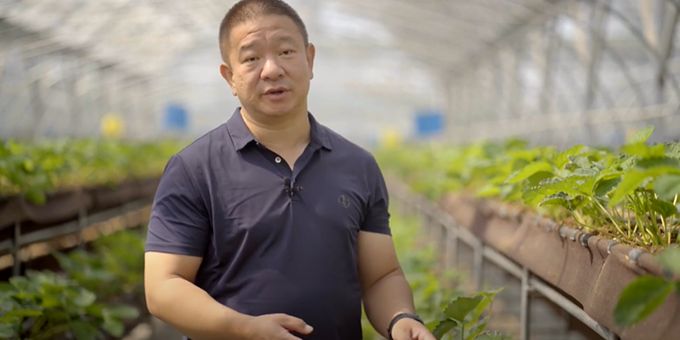It may have been billed as a contest between man and machine. But two opposing teams in a smart agriculture competition that pit data scientists against traditional growers have since gone into business together.
 Farmers and Data Scientists Join Hands to Develop Precision Technology for Agriculture
Farmers and Data Scientists Join Hands to Develop Precision Technology for Agriculture

Article from | Pinduoduo
It may have been billed as a contest between man and machine. But two opposing teams in a smart agriculture competition that pit data scientists against traditional growers have since gone into business together, combining their respective expertise to help other smallholder farmers.
Yanjiutian, one of the top strawberry growing companies from Anhui province, met Zhiduomei, a precision agriculture team, at the inaugural Smart Agriculture Competition co-organized by Pinduoduo last year. They competed to see who can grow more strawberries, with the technology teams producing 196% more fruit on average versus the traditional teams.
“Precision agriculture is very beneficial if it can be applied to improve traditional farming methods,” said Sun Yuqing, a member of the Yanjiutian team, one of the top strawberry growers in the province of Anhui.
The two companies are working together to offer technical advice and horticulture management to strawberry farms in Feixi county in Anhui.
Yanjiutian is offering its growing expertise and providing seedlings and management of the greenhouses, while Zhiduomei provides a one-click planting service developed from its participation in the Smart Agriculture Competition.
With the use of sensors to monitor growing conditions and algorithms to analyze and recommend actions, growers can adjust inputs of water and fertilizer with more precision to achieve greater yield.
“There are still areas where AI cannot supplant humans, such as human observation of mild disease or infestation,” said Cheng Biao, leader of the Zhiduomei team. “On the other hand, traditional growers may not be as experienced in collecting and analyzing data, so in this project we’re combining our strengths.”
The Smart Agriculture Competition has helped small and medium-sized enterprises like Zhiduomei shorten the time to develop and commercialize their technology offerings, said Cheng. Through the contest, the company was able to refine its product and develop lower-cost technology that is suited to the financial conditions of smallholder farmers, said Cheng.
This year, the Smart Agriculture Competition is focusing on tomatoes. Four teams with cross-disciplinary expertise in agronomy and computer algorithms were selected for the final round now taking place at Pinduoduo’s smart greenhouse base in Yunnan.
Contestants will take a multidisciplinary approach, applying nutrition science, precision farming and other relevant technology to cultivate tomatoes. The winners will be judged on yield, nutritional value, environmental sustainability and commercial viability.
The competition is one of Pinduoduo’s initiatives to support agricultural modernization and rural vitalization in China. In August, Pinduoduo announced a “10 Billion Agriculture Initiative” to face and address critical needs in the agricultural sector and rural areas. Among its aims is to facilitate the advancement of agritech, promote digital inclusion and provide agritech talent and workers with greater motivation and a sense of achievement.
The content & opinions in this article are the author’s and do not necessarily represent the views of AgriTechTomorrow
Comments (0)
This post does not have any comments. Be the first to leave a comment below.
Featured Product

